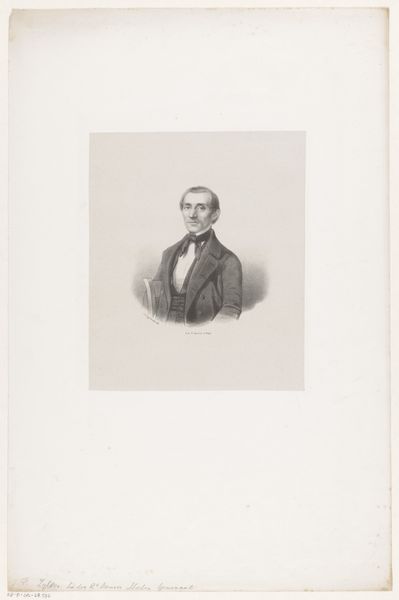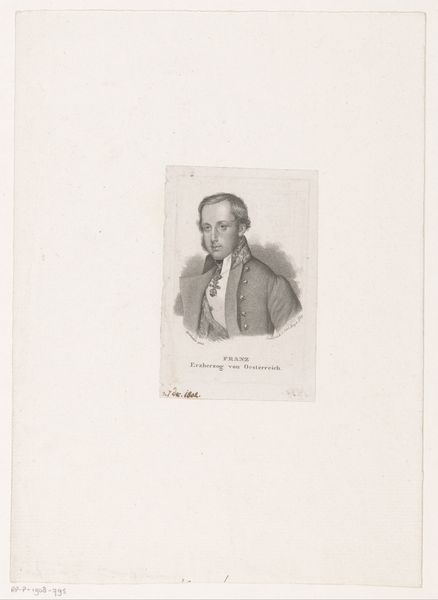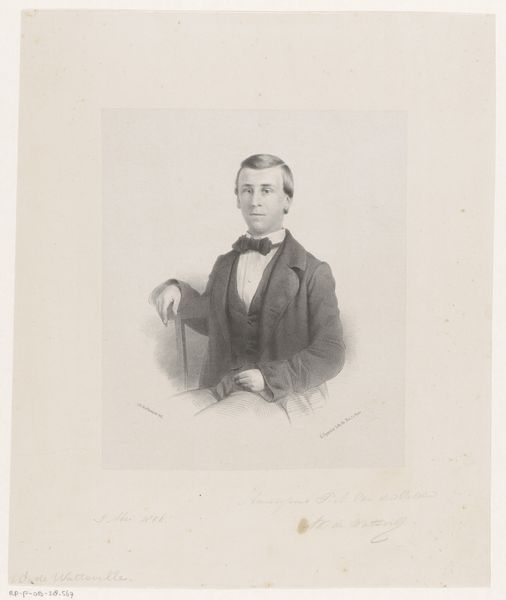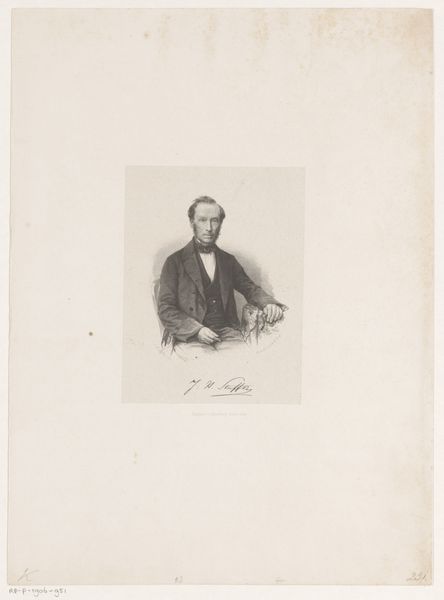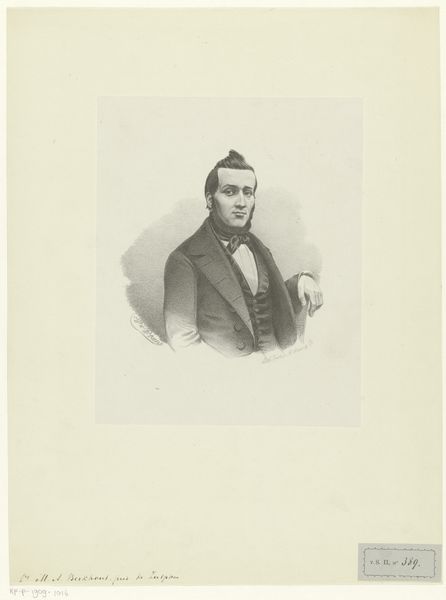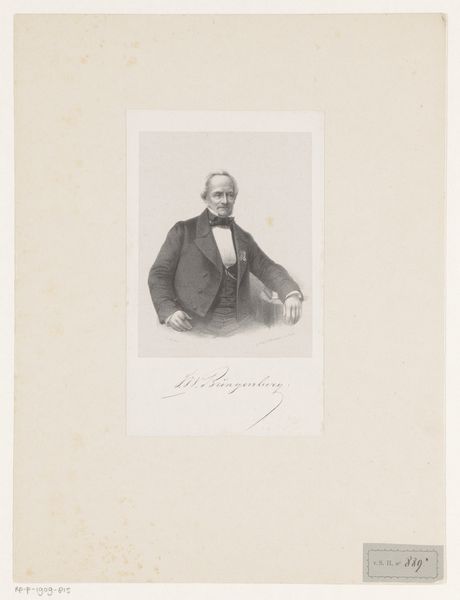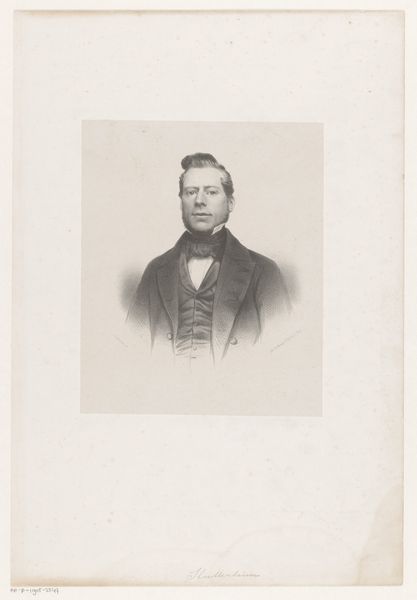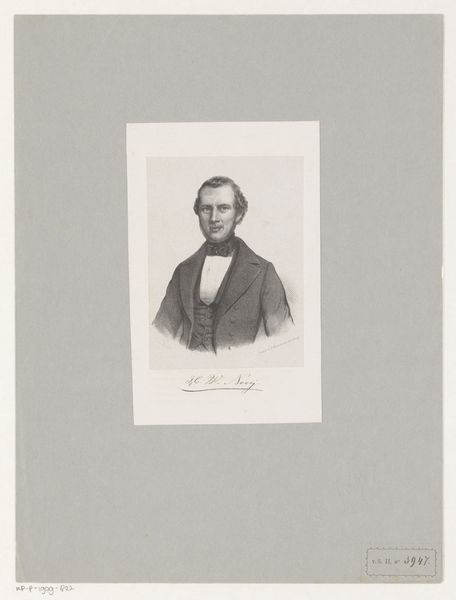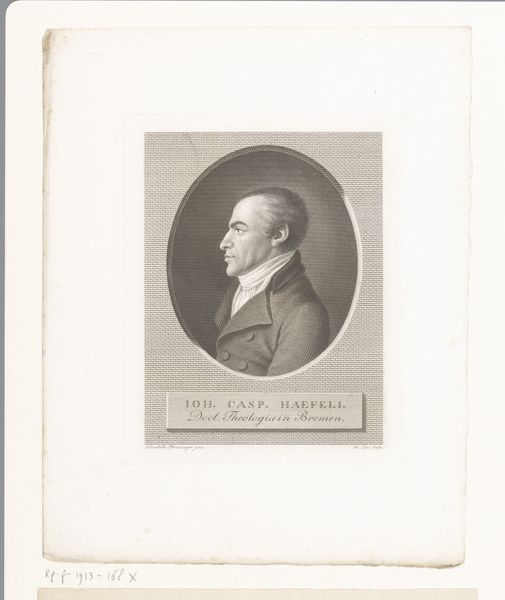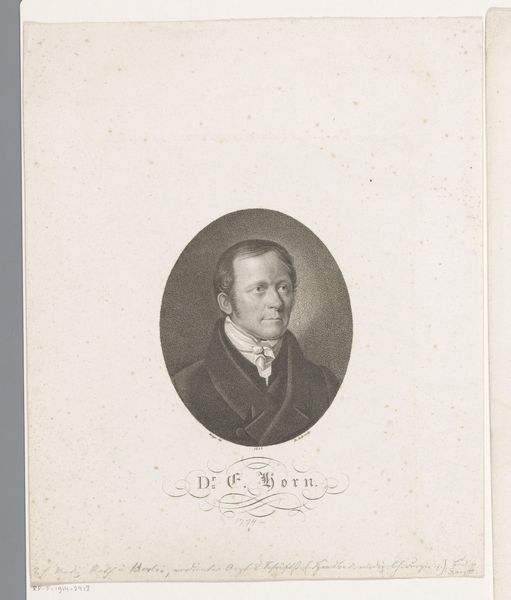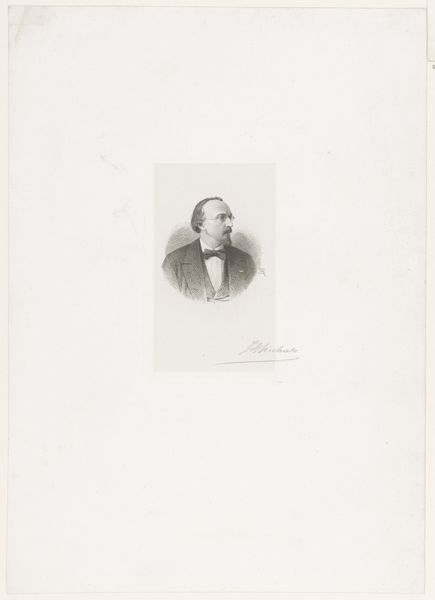
#
portrait
# print
#
realism
Dimensions: height 430 mm, width 285 mm
Copyright: Rijks Museum: Open Domain
Editor: This print, "Portret Johannes Lambertus Antonius Luyben," dating roughly from 1843 to 1863, captures a serious-looking gentleman. He seems rather imposing, a figure of authority, perhaps? I'm intrigued by the artist’s focus on detail despite it being a print. What jumps out at you when you look at it? Curator: What leaps to mind, aside from the man's palpable presence, is actually a curious sense of melancholic stoicism. Almost like peering through a fog of bygone days! Tell me, do you notice the two crosses pinned to his coat? A reminder that this man exists, as do all of us, within a broader theatre, where civic duty mingles with personal sacrifice. Have you ever considered how a simple portrait can be a sort of stage, capturing not just a likeness, but the very essence of an era? Editor: That’s a perspective I hadn't considered, the idea of the portrait as a stage. It makes me think differently about the medals, and the detail invested into his face. Were prints common ways to distribute portraits then? Curator: Ah, you're sharp! Indeed. Before photography reigned supreme, prints democratized portraiture, didn't they? Making the visages of important people available to a wider public – an intriguing interplay between art and propaganda, wouldn't you say? The detail you noticed becomes all the more precious. Almost as if the artist wanted to encapsulate the entire lived experience within the lines etched on a plate. Do you sense a narrative woven in his eyes? Editor: I do, actually. There’s a weariness there. Looking at this print with you has completely changed how I see it. What started as a simple portrait now seems so complex and layered. Curator: Precisely! It’s rather thrilling, isn’t it? The mundane blossoming into the profound! And that's the enduring enchantment of art – revealing the universes hidden within seemingly simple forms.
Comments
No comments
Be the first to comment and join the conversation on the ultimate creative platform.
